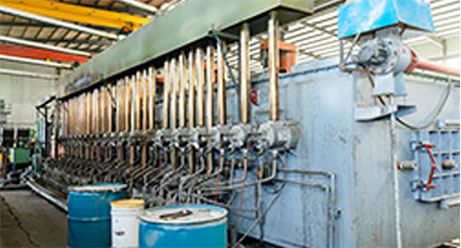

fastener use
Oct . 19, 2024 15:13 Back to list
fastener use
Understanding the Importance of Fastener Use in Various Industries
Fasteners are essential components in countless applications and industries, playing a crucial role in ensuring the integrity, safety, and functionality of a wide range of products. From construction and manufacturing to automotive and electronics, fasteners are integral to assembling and joining materials securely. This article will explore the importance of fastener use, the types of fasteners available, their applications, and the considerations that should be taken into account when selecting them.
Types of Fasteners
Fasteners come in various forms, each designed for specific applications. The most common types include
1. Bolts Usually used with nuts, bolts provide strong connections for heavy loads. They are often employed in construction and machinery.
2. Screws These have a helical ridge (thread) that enables them to grip materials firmly. They are commonly used in wood and drywall applications.
3. Nuts Screws are paired with nuts to maintain tight connections. They can be hexagonal, square, or specialized shapes to suit unique requirements.
4. Washers These flat discs are used to distribute loads and prevent damage to surfaces during fastening. Washers help to ensure a secure fit.
5. Rivets When permanent fastening is needed, rivets are often the method of choice. They are utilized in applications such as aviation and metal structures.
6. Anchors Used to secure objects to walls or ceilings, anchors come in various forms and are crucial for ensuring stability, especially in construction and heavy installations.
Applications Across Industries
The versatility of fasteners allows them to be used in a wide range of industries.
1. Construction In the construction industry, fasteners are critical for structural integrity. They hold together beams, frames, and fixtures, ensuring buildings can withstand various loads and environmental conditions.
fastener use

2. Automotive In the automotive sector, fasteners are used throughout the vehicle, securing everything from the engine components to decorative parts. They are designed to handle vibrations and thermal expansions, which are prevalent in vehicles during operation.
3. Electronics In electronics, micro fasteners are used to hold circuit boards, screens, and housings together, ensuring reliable functionality and durability. The demand for precision and lightweight materials is particularly high in this field.
4. Manufacturing Fasteners are ubiquitous in manufacturing processes, joining components in assembly lines. Their effectiveness can impact efficiency, safety, and overall production quality.
Considerations for Fastener Selection
When choosing the right fasteners for a project, various factors must be taken into account
1. Material Compatibility Different materials react differently under various environmental conditions. Understanding corrosion resistance, tensile strength, and thermal properties is vital for selecting the appropriate fastener material.
2. Load Requirements Assessing the load that fasteners must bear is essential. Engineers need to consider static and dynamic loads to avoid fastener failure.
3. Installation Method Some fasteners require specialized tools for installation, while others can be installed with basic hand tools. The ease of installation can affect labor costs and time.
4. Standards and Certifications Many industries require fasteners to meet specific standards. Quality certifications can ensure that the fasteners will perform reliably over time.
5. Cost While cost should never compromise quality, it is a significant factor in selecting fasteners, particularly for large-scale projects.
Conclusion
Fasteners might be small components, but their role in various industries is monumental. They ensure the safety and reliability of structures, vehicles, electronics, and more. By understanding the different types of fasteners, their applications, and the factors involved in selecting the appropriate fasteners, industries can enhance their efficiency and safety standards. Every assembly, whether in a high-rise building or an electronic device, relies on these understated yet critical components to function seamlessly. Thus, proper fastener use is not just a choice but a necessity for anyone involved in design and engineering.
Latest news
-
High-Strength Hot-Dip Galvanized Bolts-Hebei Longze|Corrosion Resistance&High Strength
NewsJul.30,2025
-
Hot Dip Galvanized Bolts-Hebei Longze|Corrosion Resistance&High Strength
NewsJul.30,2025
-
Hot Dip Galvanized Bolts - Hebei Longze | Corrosion Resistance, High Strength
NewsJul.30,2025
-
High-Strength Hot Dip Galvanized Bolts-Hebei Longze|Corrosion Resistance, Grade 8.8
NewsJul.30,2025
-
Hot Dip Galvanized Bolts-Hebei Longze|Corrosion Resistance,High Strength
NewsJul.29,2025
-
High-Strength Hot Dip Galvanized Bolts - Hebei Longze Metal Products Manufacturing Co., Ltd.|corrosion resistance&high strength
NewsJul.29,2025

